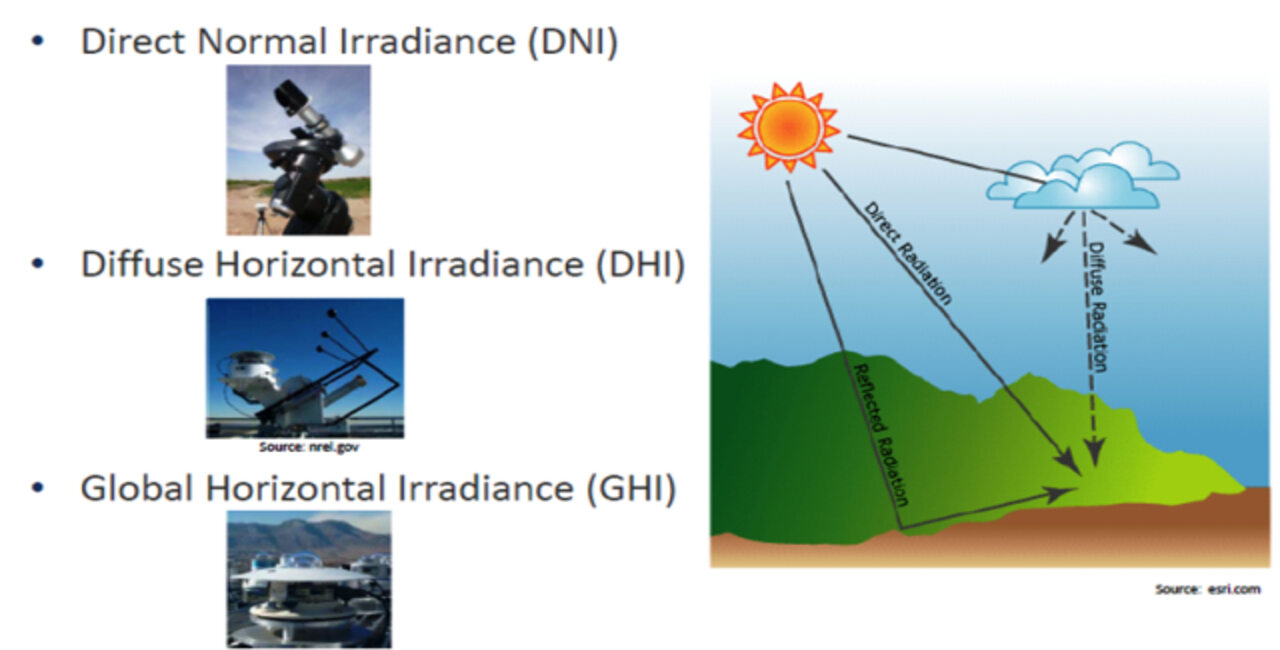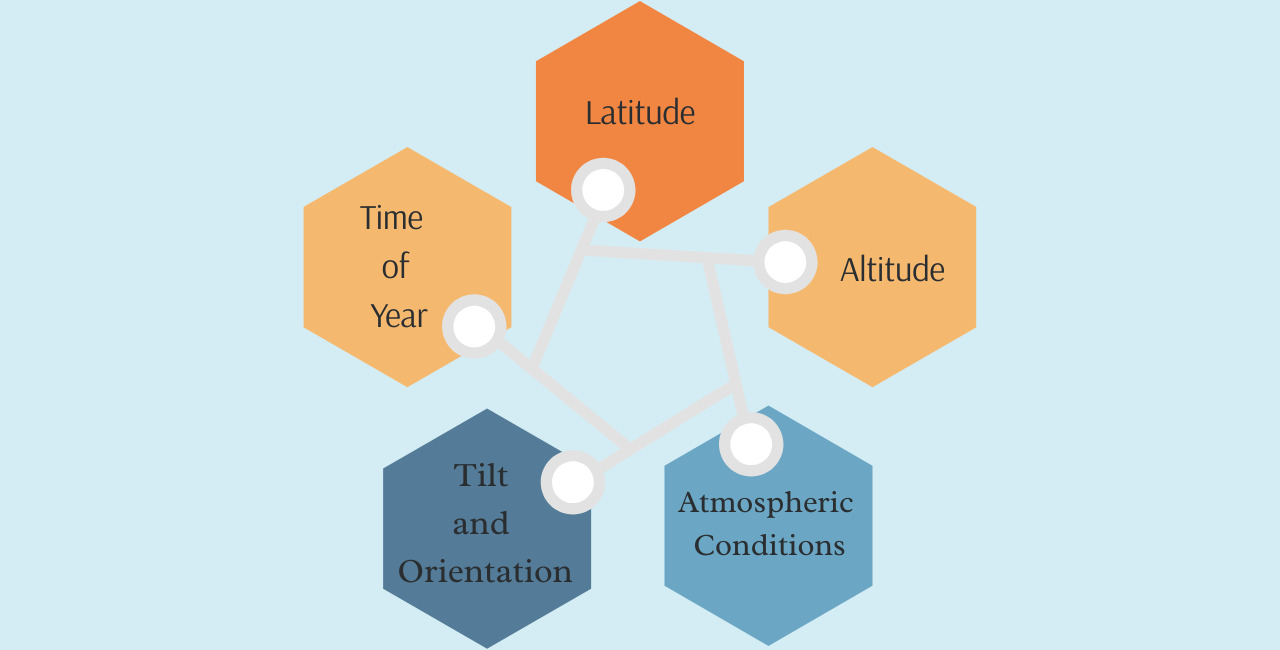.jpg)
Have you ever heard of the term “solar irradiance? This is a word you’ll hear whenever you are involved with solar energy or solar design but it's not that difficult as it sounds.
You need solar irradiance to know how solar panels work and how much energy they can produce. This is necessary for accurate solar forecasting, energy yield estimates and solar system design.
Solar irradiance lets you know how much power the solar panels can produce. It tells us how strong the sunlight is in a specific areas which helps in predicting energy output and planning better solar systems and understanding how weather or seasons might affect performance. Easy right? Well let’s make it easier.
In this guide, we’ll break down solar irradiance, the different types, how it’s measured and why it’s so important for solar performance. This blog covers it all in simple language. Let’s get started.
Solar irradiance is a core concept in solar energy. In simple terms, it’s the amount of sunlight or solar power that hits a specific surface area measured in watts per square meter (W/m²).
This value plays a big role in solar design software, how?
Knowing how much sunlight an area gets is important and a needed information for things like designing rooftop solar systems, figuring out how much power a building needs or even studying the environment.
And if you’re confused about solar radiation and insolation, here’s a quick tip: irradiance is the amount of sunlight hitting a surface right now while insolation is the total sunlight gathered over a period of time.
In order to understand how solar irradiance works we need to know the source of the energy and how it is distributed once it reaches the Earth.
At the top of Earth’s atmosphere a consistent amount of solar power arrives. This is known as the solar constant which averages around 1361 W/m². It reflects the Sun’s output as measured from space and is an important part of solar constant and Earth’s energy balance studies.
NASA and NOAA satellites monitor what’s called Total Solar Irradiance (TSI). TSI is not exactly constant; it slightly varies due to solar flares and sunspot activity. These fluctuations affect Earth’s climate cycles and long-term energy balance.
Understanding TSI helps in long-term climate predictions and ensures better calibration in solar design software tools.
In addition to the total amount of sunlight, there's something called Spectral Solar Irradiance (SSI). It shows how much solar energy comes in at different colors or wavelengths of light.
This matters because solar panels work better with certain parts of sunlight hitting it than others. Designers use SSI data to choose panel materials, coatings, or configurations that match real-world conditions.
SSI vs TSI is the difference between detailed and overall analysis and both are important for accurate solar modeling.

When solar radiation passes through the atmosphere it interacts with air molecules, clouds, and dust. This leads to different types of irradiance:
DNI is the sunlight that shines directly from the Sun to a surface that’s pointed straight at it. It’s really important for technologies like concentrated solar power (CSP), which need strong, direct sunlight to work well.
When sunlight is scattered in the atmosphere by clouds, gases, or dust, it becomes diffuse irradiance. This scattered light reaches the surface from multiple angles.
Even on overcast days, DHI contributes significantly to solar energy capture specially in northern climates.
GHI combines direct and diffuse components on a horizontal surface. The formula is:
GHI = DNI × cos(θ) + DHI
Here, θ is the angle between the Sun and the panel surface. GHI is widely used in solar PV modeling specially for rooftop installations.
Getting accurate irradiance data is very important for energy yield predictions, shading analysis, and performance modeling in PV systems.
To measure irradiance, two instruments are commonly used:
Satellites provide broad-scale irradiance data. Tools like the Global Solar Atlas and NASA's POWER platform give free access to irradiance maps and historical datasets.
India’s SRRA network which is maintained by NIWE consists of ground stations that monitor solar radiation parameters in real time. You get a reliable solar resource map by blending satellite and on-ground data which is essential for input for large-scale solar planning.

Solar irradiance levels differ based on geography, weather and pollution. Here are key factors:
These variations are accounted for by solar design software when modeling a system’s expected output in different locations and seasons.
Solar irradiance is used in multiple fields beyond just rooftop solar. Some of the key applications include:
Instruments like the Fluke IRR1-SOL meter make on-site irradiance measurement easy for installers and engineers.
.png)
Irradiance directly impacts the energy output of solar panels. But the actual output also depends on how efficient the system is at converting that sunlight into electricity.
This is measured using the Performance Ratio in PV. A key metric in the industry.
Performance Ratio = Actual Output / Theoretical Output
It shows how well a solar power system is performing relative to ideal conditions. High irradiance with poor system performance might mean shading issues, inverter losses or even incorrect tilt angles.
Modern solar design software includes tools to simulate these losses and suggest improvements which ultimately helps to improve the system’s PR and yield.
Irradiance measures sunlight power (W/m²) at any given moment. Insolation is the total energy received over time (Wh/m² or kWh/m²). Think of irradiance as a snapshot, and insolation as the time-lapse.
GHI is computed using this formula:
GHI = DNI × cos(θ) + DHI
θ is the angle between the solar panel and the Sun. It’s a key parameter in most solar design software platforms.
Pyranometers are best for general use and GHI measurements. Pyrheliometers provide more precise DNI data but are more complex to operate and costly.
Global warming doesn’t change the Sun’s output, but it can influence local irradiance levels. Increased cloud cover, aerosols, and air pollution can scatter or block sunlight especially in urban areas.
This has implications for both solar constant and Earth’s energy balance and solar power generation in high-pollution zones.
.png)
Solar irradiance is more than just a scientific term. It’s the foundation of every solar energy project. From understanding the solar constant to breaking down GHI, DNI, and DHI. Irradiance helps determine how much energy your system can generate and how it will perform over time.
You can use the sun’s full potential through accurate irradiance data, smart design and the right tools
Whether you're an installer, a homeowner or an enterprise planning a utility-scale plant, ARKA 360's solar design & proposal software helps you design smarter, simulate performance, and create professional proposals, all in one platform.













